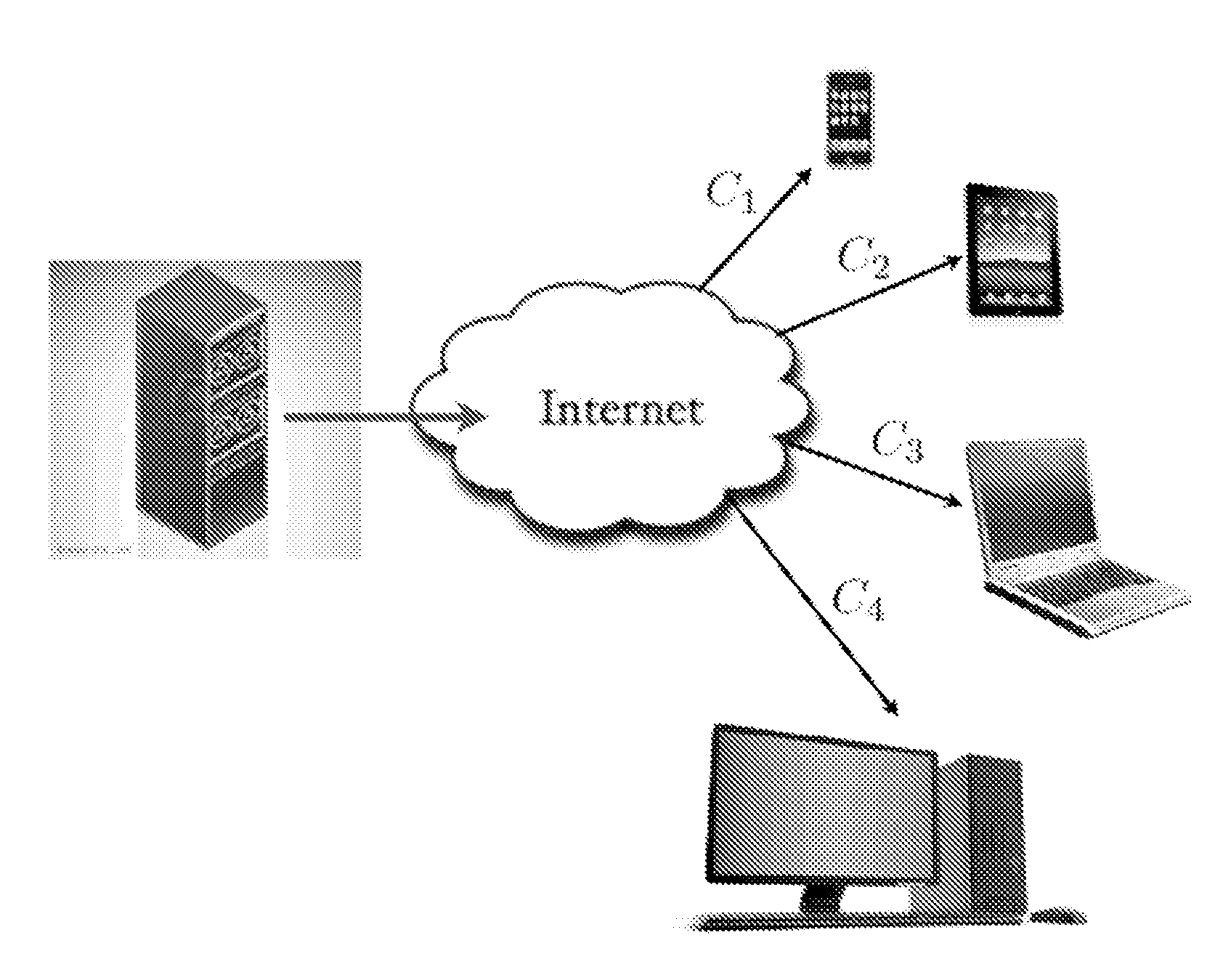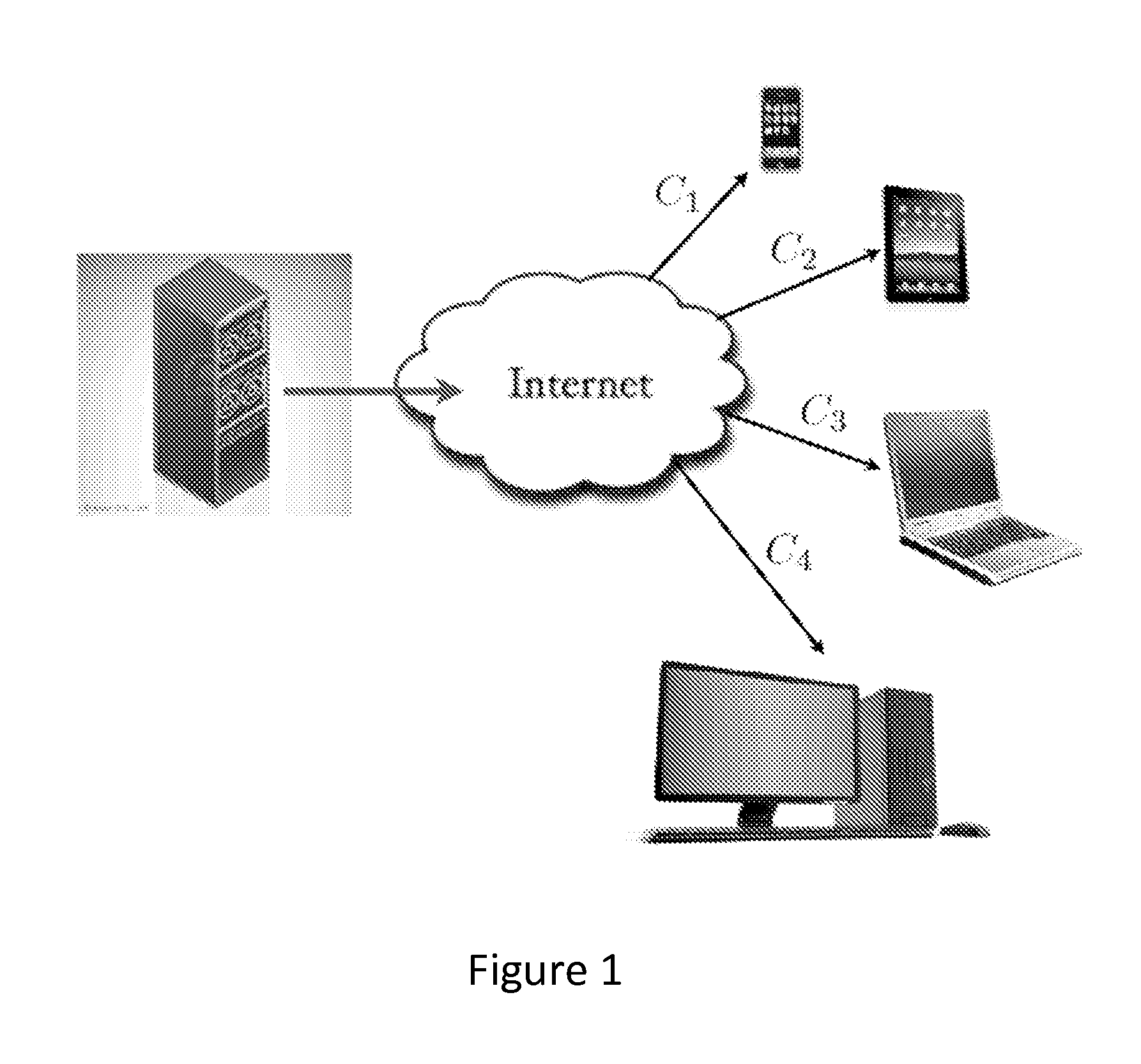System and method for lossy source-channel coding at the application layer
a lossy source and application layer technology, applied in the field of communication systems, can solve problems such as lack of real-time mechanism, and achieve the effect of minimizing the maximum gap and decreasing the resolution
- Summary
- Abstract
- Description
- Claims
- Application Information
AI Technical Summary
Benefits of technology
Problems solved by technology
Method used
Image
Examples
examples
[0070]As an example of the application of the system optimization framework developed above, we consider the case of lossy multicasting of digital (gray-scale) images over the BEBC. Two embodiments are designed according to the MMDP criterion. The former is based on the concatenation of a state-of-the art image coder, JPEG2000, with standard non-systematic Raptor codes. The latter is based on scalar quantization with linear index coding, as presented above.
[0071]JPEG2000 and Raptor codes—this case can be cast within the problem formulation set forth above, for a single source component (s=1) and where JPEG2000 plays the role of the successive refinement source code. JPEG2000 produces a bit-stream of source-encoded bits with the property that the encoder output for any given bit rate is a prefix of the output for any higher bit rate. For a given source image we can generate a set of R-D points by considering an increasing number of JPEG2000 output bits, sequentially. We considered th...
PUM
 Login to View More
Login to View More Abstract
Description
Claims
Application Information
 Login to View More
Login to View More - R&D
- Intellectual Property
- Life Sciences
- Materials
- Tech Scout
- Unparalleled Data Quality
- Higher Quality Content
- 60% Fewer Hallucinations
Browse by: Latest US Patents, China's latest patents, Technical Efficacy Thesaurus, Application Domain, Technology Topic, Popular Technical Reports.
© 2025 PatSnap. All rights reserved.Legal|Privacy policy|Modern Slavery Act Transparency Statement|Sitemap|About US| Contact US: help@patsnap.com



